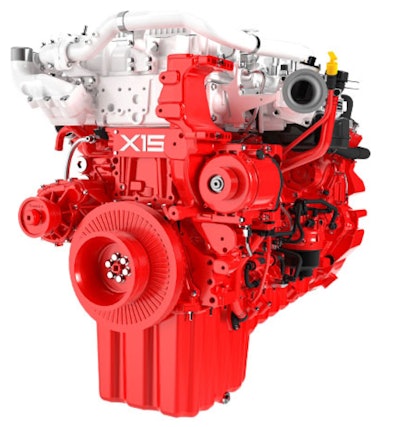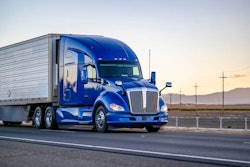When Cummins announced its X15 fuel agnostic platform in 2022, the debut of a diesel powered unit was slated for launch in early 2026. This year, however, has been difficult for truck and engine makers as some of the regulations they have spent years and millions of dollars to meet are teetering on the brink of repeal while others have already been spiked.
With regulatory uncertainty swirling relative to greenhouse gas and NOx emissions at state and federal levels, Cummins said Wednesday it will delay launch of its newest diesel until late 2026.
Cummins Chairman and CEO said Jennifer Rumsey estimated the delay for the new diesel to be about six months, citing uncertainty around regulations and tariffs, "which created an environment where, even though it was a more efficient product that we thought could bring some value to customers, the demand was a concern."
The near-term outlook isn't rosey. Driven by uncertainty due to trade tariffs, product regulation and caution about the prospects for freight, Rumsey added that she expects North America heavy- and medium-duty truck volumes to decline 25% to 30% from second quarter levels as truck orders recently reached multiyear lows and OEMs initiated reduced work weeks through the next three months.
 Cummins’ fuel-agnostic engines feature a series of engine versions derived from a common base engine. Component similarity below the head gasket will drive down production costs and help reduce the learning curve for technicians, while the engine build from the head gasket up will be dependent on the fuel spec.
Cummins’ fuel-agnostic engines feature a series of engine versions derived from a common base engine. Component similarity below the head gasket will drive down production costs and help reduce the learning curve for technicians, while the engine build from the head gasket up will be dependent on the fuel spec.
"We are no longer launching the X15 earlier in the year. So at the end of next year," she said, "we’ll be launching those new platforms to comply with the '27 regulation and continue to keep the team focused on that."
Exactly what those 2027 regulations will be remains to be seen.
The Trump administration targeted for repeal late last month the Endangerment Finding, which has allowed presidential administrations to regulate six greenhouse gases (carbon dioxide, methane, nitrous oxide, hydrofluorocarbons, perfluorocarbons, and sulfur hexafluoride) since 2009. Such a measure, if finalized, would wipe out EPA’s greenhouse gas (GHG) rules for medium-duty vehicles and heavy-duty vehicles and engines, including standards first set in 2011 and those scheduled to take effect in 2027 and through the next decade.
Congress in May voted to revoke strict state-level emissions standards enacted by California's Air Resources Board (CARB), rolling back California Truck Emission Standards (CARB's Omnibus rule) and California Truck NOx Emission Standards (CARB's Advanced Clean Trucks regulations), respectively. That move, already signed by President Donald Trump, faces litigation from the state of California.
Environmental Protection Agency Administrator Lee Zeldin said in March his office also intends to revisit portions of the Biden-era Clean Trucks Plan, which includes the 2022 Heavy-Duty NOx rule – a standard that includes new, more stringent emissions standards that cover a wider range of heavy-duty engine operating conditions and requires these more stringent emissions standards to be met for a longer period of time.
Cummins expects its next generation diesel X15 to feature improved greenhouse gas and fuel efficiency benefits while retaining the same ratings of the current X15 (up to 605 horsepower and 2,050 ft-lb of torque) and optimizing powertrain integration with Eaton Cummins and Cummins-Meritor.














